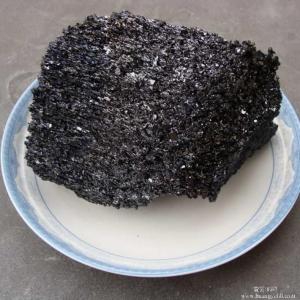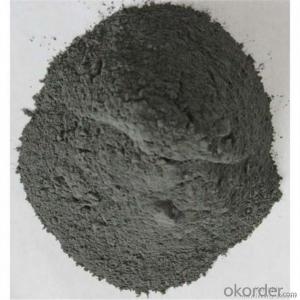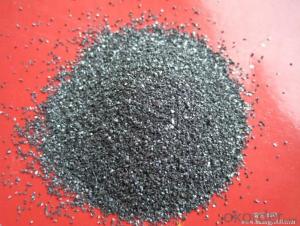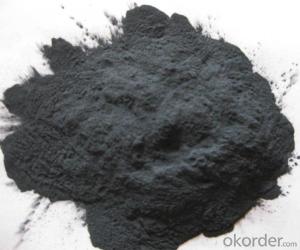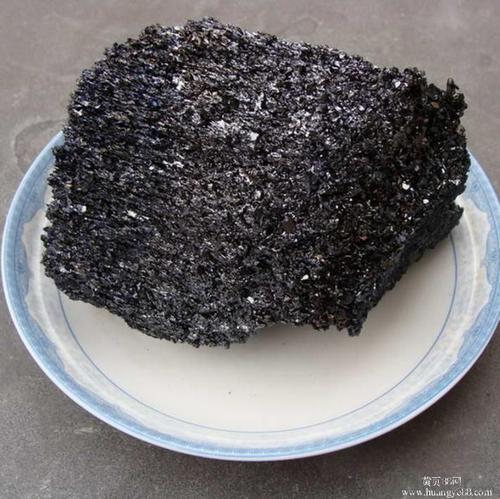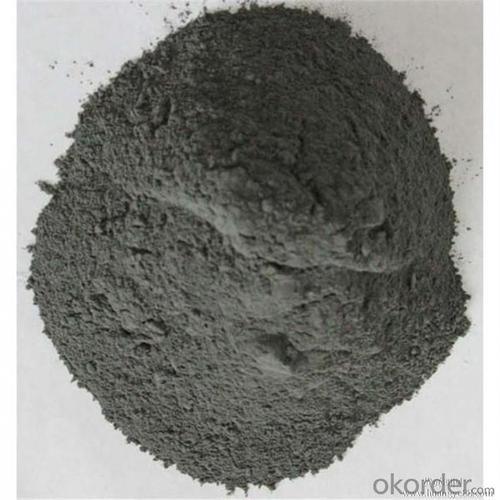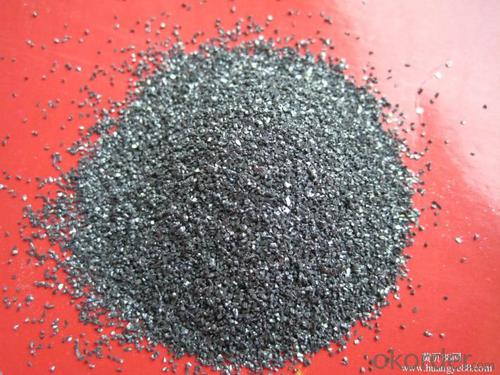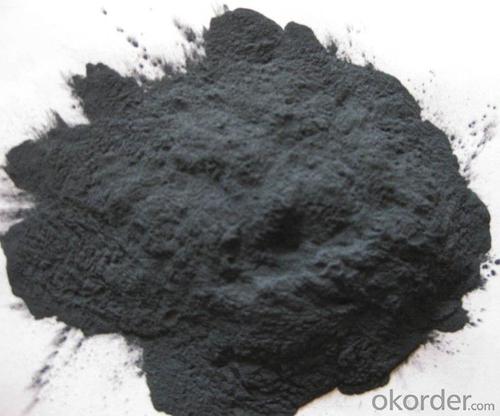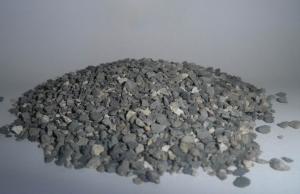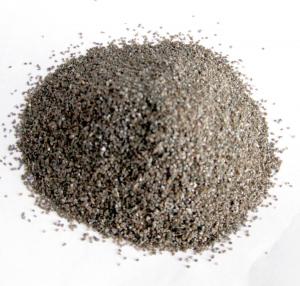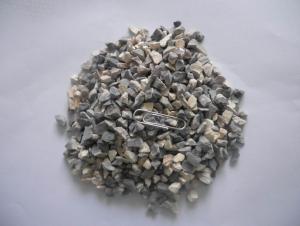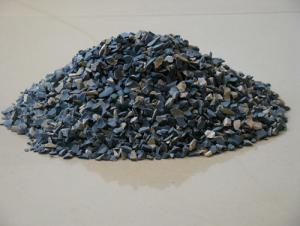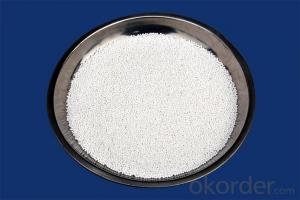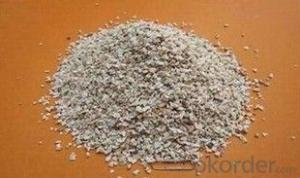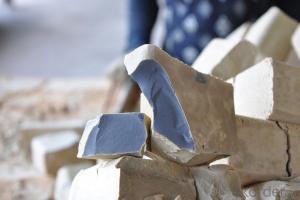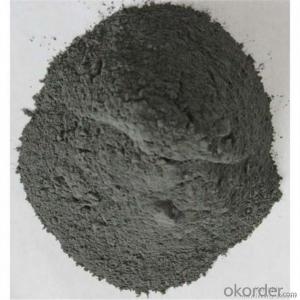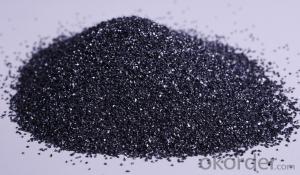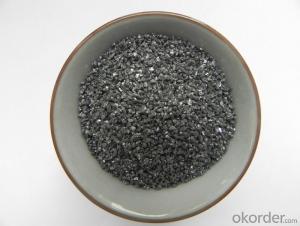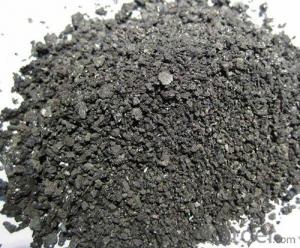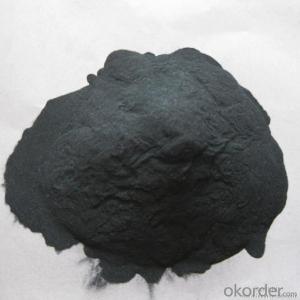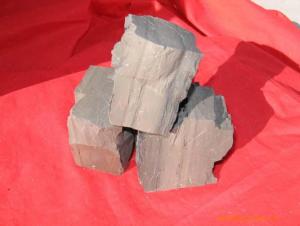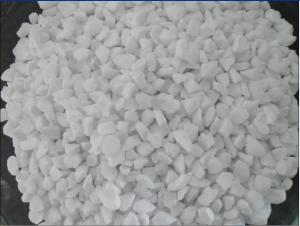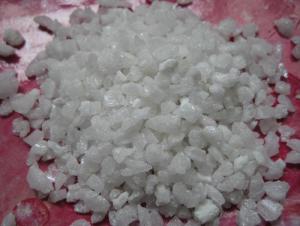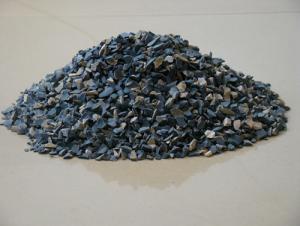Raw Materials for Refractory - Abrasive Black Silicon Carbide Powder 98.5% SiC
- Loading Port:
- Tianjin
- Payment Terms:
- TT OR LC
- Min Order Qty:
- 25 m.t.
- Supply Capability:
- 3000 m.t./month
OKorder Service Pledge
OKorder Financial Service
You Might Also Like
Abrasive Black Silicon Carbide powder 98.5% SIC
1.Structure of Silicon Carbide Description
Black Silicon Carbide is produced with high temperature in a electric resistant furnace from a mixture of quartz sand and petroleum coke.
Black silicon carbide is typically used for working on cast iron ,non-ferrous metals, stone, leather, rubber, and other materials which requires sharp cutting characteristics. The mineral is also used widely as a refractory material and metallurgical additive.
2.Main Features of the Calcined Bauxite
Its hardness is between that of fused alumina and synthetic diamond and mechancial intensity of it is also greater than that of fused alumina. It is brittle and very sharp and has a certain degree of electrical and heat conductivity.
3.Main usage of the Calcined Bauxite
1.Grinding non-ferrous materials, rock, stone, leather, rubber, finishing tough and hard materials
2.Bonded abrasive tools, lapping and polishing
3.Widely used as a metallurgical additive and refractory material
4.Refractory
4. Calcined Bauxite Images
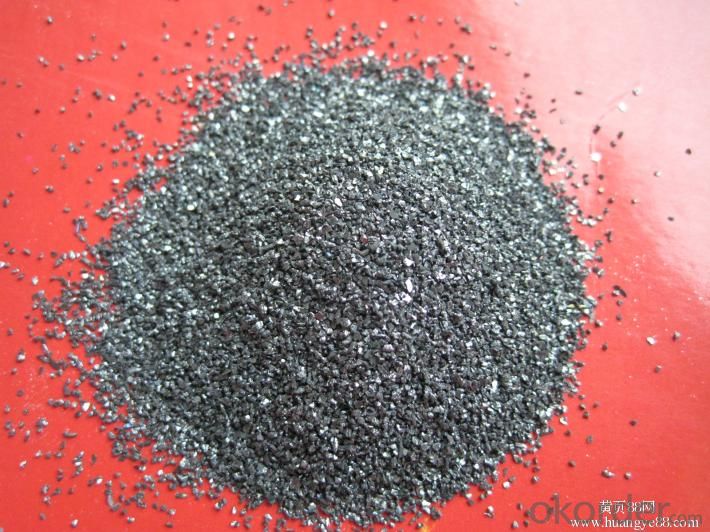
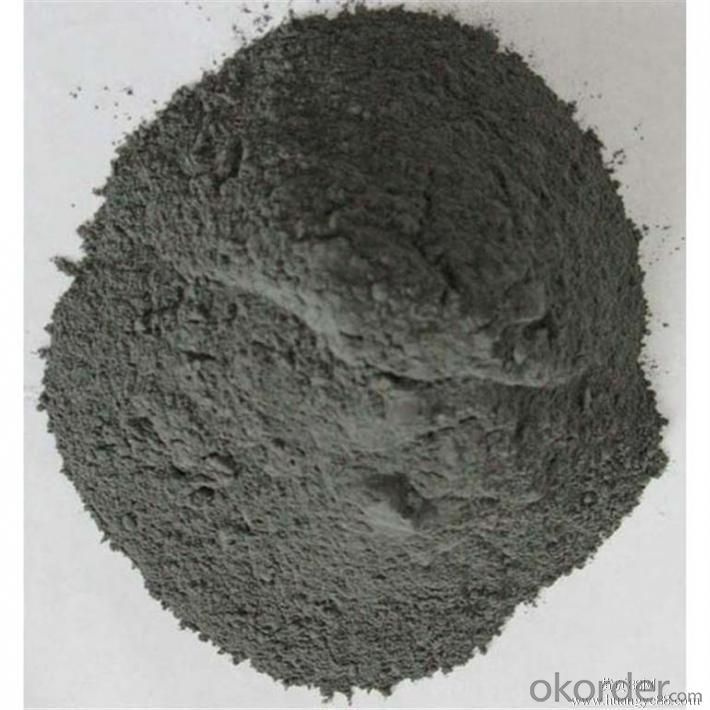
5. Calcined Bauxite Specification
1.SiC70 C15%max TFe2%max H2O0.5%max
2.SiC80 C5%max TFe1%max H2O0.5%max
3.SiC95 C3%max TFe1%max H2O0.5%max
6.FAQ of Calcined Bauxite
1). Q: Are you a factory or trading company?
A: We are a factory.
2). Q: Where is your factory located? How can I visit there?
A: Our factory is located in Ningxia, China. You are warmly welcomed to visit us!
3). Q: How can I get some samples?
A: Please contact me for samples
- Q: What does fire-resistant insulation coating have?
- Refractory thermal insulation material mainly refers to the inorganic thermal insulation material and composite thermal insulation material. According to the shape, it can be divided into: Finishing of fibrous shape, mineral?cotton, rock wool, glass wool, aluminum?silicate?wool, ceramic fiber, etc. Diatomaceous earth of microporous pile, calcium silicate, expanded perlite,expanded vermiculite,aerated concrete, etc. Foam glass of bubble shape, volcanic ash glass, foamed clay, foamed?concrete, gelatine powder polyphenyl granule heat insulating slurry of pasty form, etc. Their common feature is fire-retardant and firproof. It can be used in buildings with high requirements of fire?rating. Calcium silicate, aluminum silicate and asbestos can also be used for piping insulation of heat transport with high temperature. Hope it is helpful to you.
- Q: As for fireproofing material rock wool and glass wool, which one is better?
- As for fireproofing effect, the effect of rock wool is certainly better than glass wool , the highest temperature of rock wool is 1100 ℃, but the temperature of glass wool is only 600 ℃. In addition, if it's used in the external walls, then,unit weight of the glass wool is limited,and high unit weight can only be 60-90, but unit weight of rock wool can reach over 140, now external wall can't use glass wool, and only rock wool is A class fireproofing material. glass wool has lower thermal conductivity, rock wool has longer fiber length,as for the price, tons price of glass wool is more expensive than rock wool, but if it's acculated by square, square price of glass wool is cheaper than rock wool.
- Q: What is the use of refractory?
- It is equivalent to a protective layer. It can be used to protect structural materials from being direcctly attecked by high tempereture or internal gases. General structural materials are steel, so the main function is resistant to fire and high temperature. In literal meaning, refractory is a fireproof material. Steel is easily deformed and wore. Structural materials can not directly touched with solid and liquid. Refractory materials are generally used as a protective lining of structural material, so it is necessary to be protected.
- Q: Using what kind of melting aluminium furnace refractories is more appropriate?
- If it's the ordinary, you can use high aluminum refractory brick with general clay, GB/T 3994-2005 clay heat insulation refractory brick. If you need these with good material, there is high alumina thermal insulation refractory brick, GB/T 3995-2006 high aluminum heat insulation refractory brick, models have A13 and material is the alumina, A13 50 u, high insulating brick B5.Intermediate insulating brick B2, etc. Dolomite brick: good hang kiln performance, good erosion resistance, but brick is usually without f - CaO, hydration, and difficult to transport and storage, less used in the production. Magnesia-chrome bricks: good hang kiln, used in calcining zone. The disadvantage is that its thermal shock resistance is poor and plus hexavalent Cr is toxic, the production and use of magnesite chrome bricks in international countries gradually reduce. Now unit using the brick find replacements as soon as possible.
- Q: What is the fire endurance of fireproof glass cotton?
- of course,A level is better. A-class is non-combustible, class B is fire retardant, rock wool fire resistance is 800 ℃, glass wool fire resistance is 450 ℃ , class B has a relatively better thermal insulation effect, hope it can solve your doubts.
- Q: What is the interior fireproof thermal insulation material?
- polystyrene foam board, glass fiber spraying, polyurethane foam, thermal insulation system of inorganic wall. Use "DY" inorganic active thermal insulation material, have small thermal conductivity, large heat storage coefficient, better strength and achieve better thermal insulation and energy-saving effect when used in wall . Wall should definitely not crack and hollow because of high temperature in summer. It doesn't crack and shed because it is influenced by stress during heat expansion and cold contraction in cold winter.
- Q: What types does refractory floor include?
- The categories of refractory are: 1. the best overall performance stone flooring (waterproof, fire retardant) The full name is microcrystalline stone flooring. It is a high-performance waterproof and fire-retardant environmental wood floor synthesized with high and new technology. Its unique raw material is ground calcium carbonate micro-crystalline polymer stone with natural resin and other twenty more imported spreadings. It is formed by refining with high temperature (300 degree centigrade) and high pressure (9,000kg). It is an environmental healthing high-performance material. Its product is innocuous and unpoisonous, and won't age, deform, fade while it is fire retardant, waterproof, maintenance-free and quality, so it is an inevitable repalcement with traditional wood floor. This product has been confirmed as national key promotion program. 2. Wear-resistant composite solid wood floor It is also known as super wear-resistant multi-layer solid wood floor. First stiffening layer surface (based on inorganic materials and steel fibers for paper impregnated with thermosetting amino resin with solid wood or plywood blockboard substrate surface as a combination of facing layer), the front is wear-resistant layer, and the back is balance layer. Thtough hot pressing, it is a grooved and tongued floor, a new impregnated paper laminate floor. It also has the same wear-resistant quality as laminate floor, beauty and foot feel as solid wood floor, stable structure as solid wood composite floor, etc. 3. Waterproof plastic wood floor Plastic wood (also known as "wood plastic" or "plastic wood") composites, and the English name is WOOD-PLASTIC-COMPOSITES, WPC for short.
- Q: what textures of furnace refractories are good?
- The common one uses the ordinary aluminous fireclay brick and GB / T 3994-2005 insulating fireclay brick. The ones with excellet texture are high-grade thermal insulation refractory brick and GB / T 3995-2006 high alumina insulating firebrick, whose model is A13, the texture is alumina, A13 50u, advanced heat insulating brick B5; intermediate heat insulating brick B2, and so on. Dolomite brick: The formation of coating is of good performance and corrosion resistance, but to some extent, there exsits the f-CaO in the brick, which is easy to hydrate, and hard to transport and storage, thus less using in the production. Magnesia-chrome brick: The formation of coating is good, so it is widely used for burning zone, but the disadvantage is poor thermal shock resistance, coupled with the highly toxic positive Hexavalent Cr, so the international countries that produce and use the magnesia-chrome bricks are gradually reducing. The production unit using this brick now, please find alternatives as soon as possible.
- Q: Does anyone knows which company produces the better refractory materials?
- A:Building Materials Company of Guangzhou: Near the Baiyun District, Baiyun District, Guangzhou Road, North Road. B:Guangzhou Research & Development Co., ltd.: Liwan District Fengyuan road No.90 in Guangzhou City C: Huitailong decoration materials Co., Ltd.:the 30th floor of No. 111 Pacific Center, Taikang Road, Yuexiu District Guangzhou City D:Guangdong metal materials company: Near Qishan Road, Tianhe District , Guangzhou city.
- Q: What are fire resistant level standards of class A fire resistant door?
- Executive standard: GB12955-2008 Fire Door. Fire resistant level: Class A: 1.5h, B:1.0 h, C: 0.5 h. Thickness of door leaf: Class A: 50mm, B 45mm, C 40mm. Doorframe Specification: Class A, B, C. Door leaf form: Single open, double open, single open with glass, double open with glass, single open with glass and bright, double open with glass and bright, with a bright picture, Zimu glass Zimu glass with light. Doorframe Specification: Class A, B, Door leaf form: Single open, double open, single open with glass, double open with glass, single open with glass and brightness, double open with glass and brightness, double open with a lager door leaf and a smaller door leaf, double open with a lager door leaf and a smaller door leaf with glass, double open with a lager door leaf and a smaller door leaf with glass and brightness. Standard sizes: In line with GB5824-86 Hole Size of Building Doors and Windows."
Send your message to us
Raw Materials for Refractory - Abrasive Black Silicon Carbide Powder 98.5% SiC
- Loading Port:
- Tianjin
- Payment Terms:
- TT OR LC
- Min Order Qty:
- 25 m.t.
- Supply Capability:
- 3000 m.t./month
OKorder Service Pledge
OKorder Financial Service
Similar products
Hot products
Hot Searches
Related keywords
